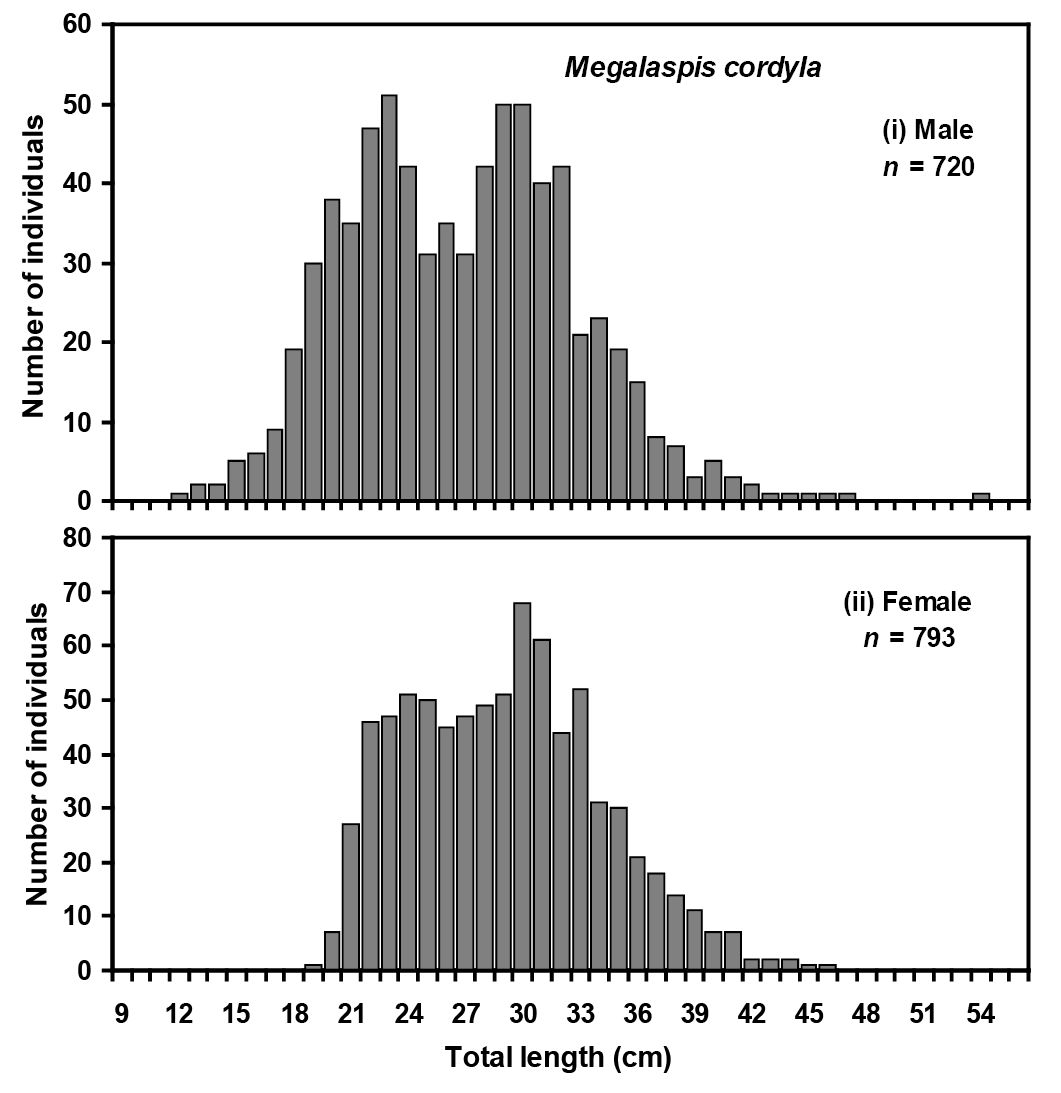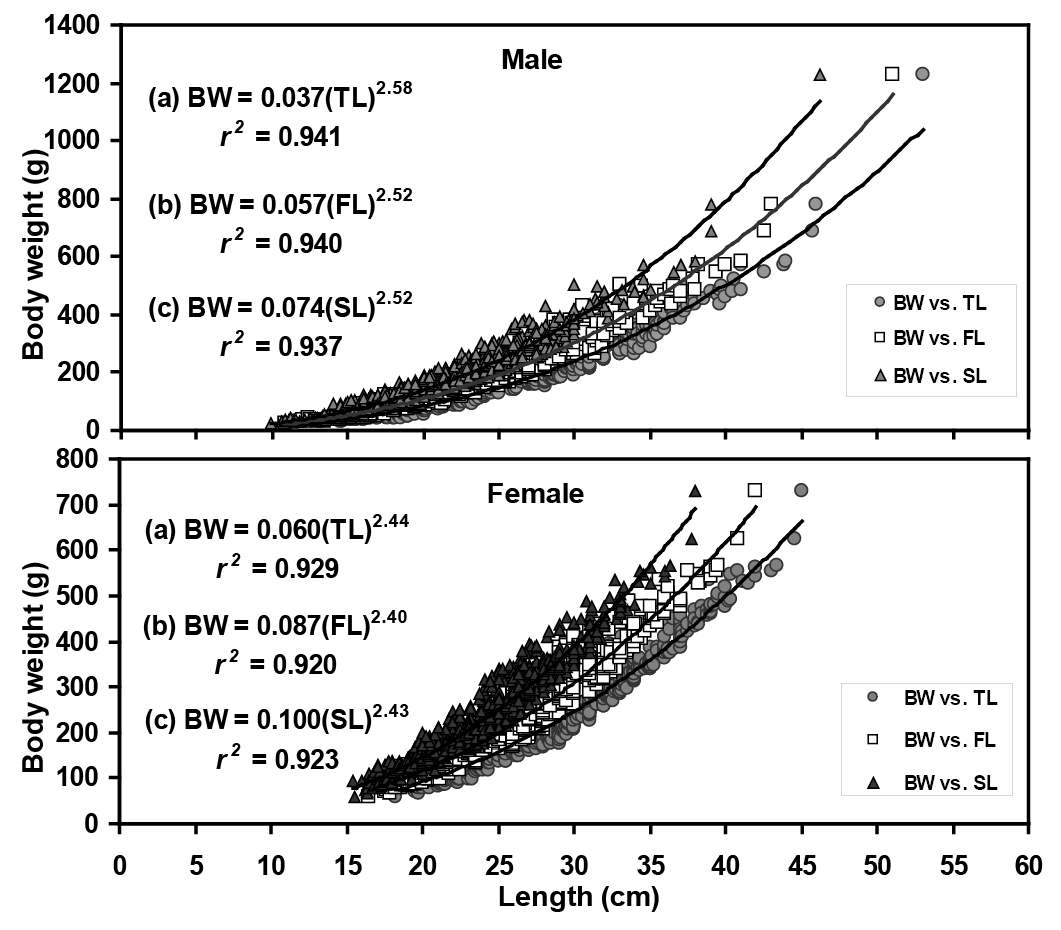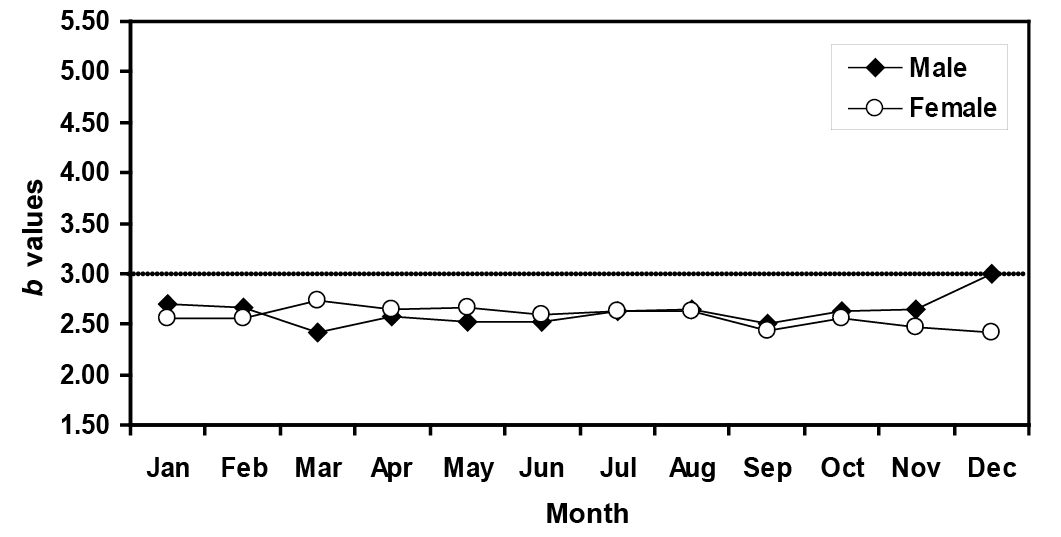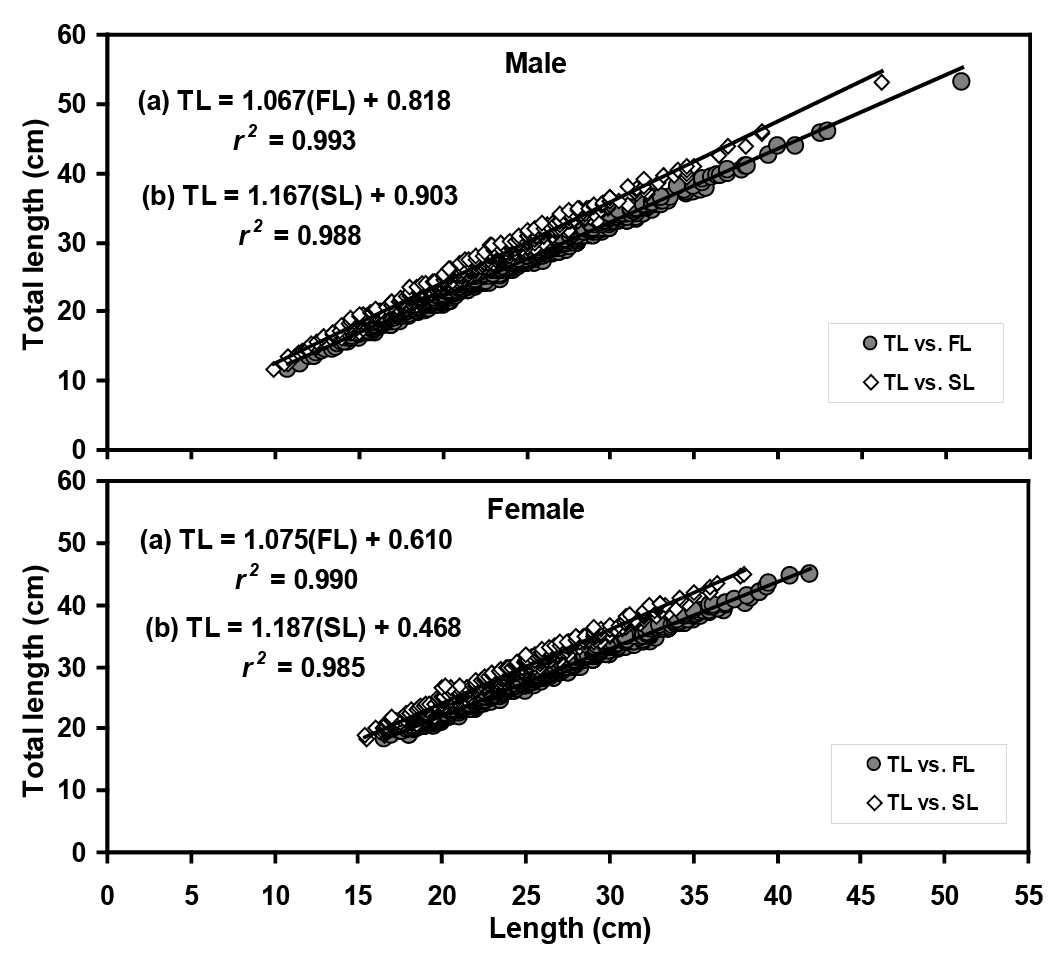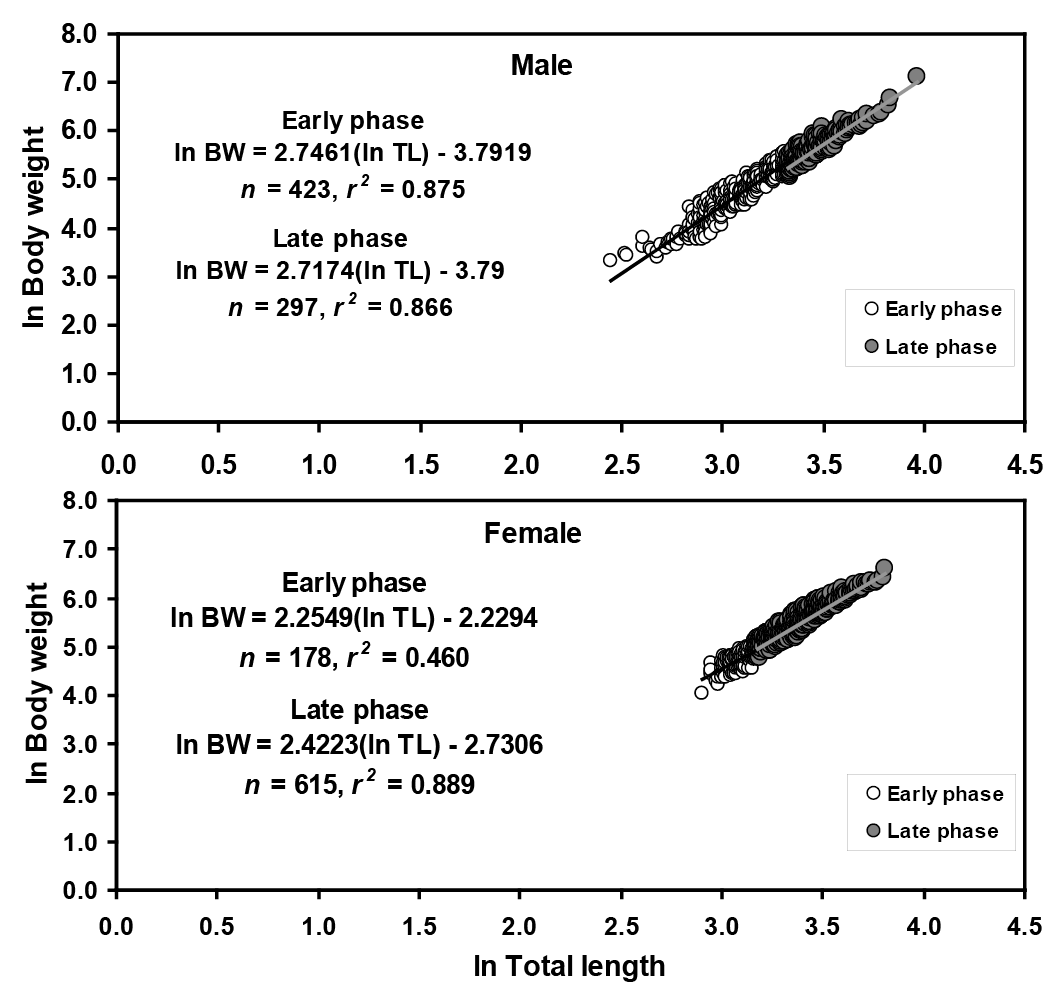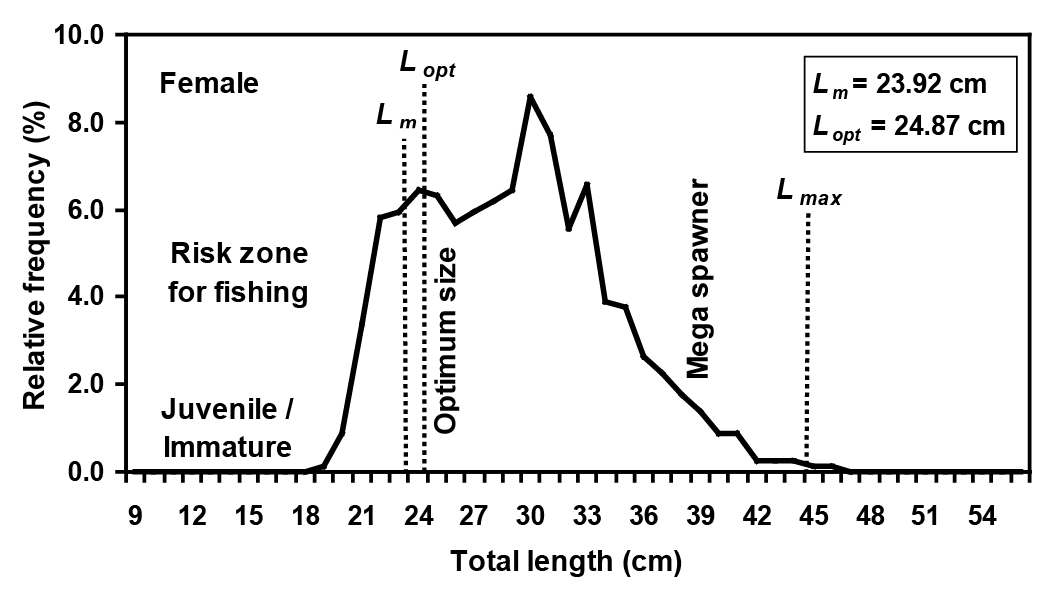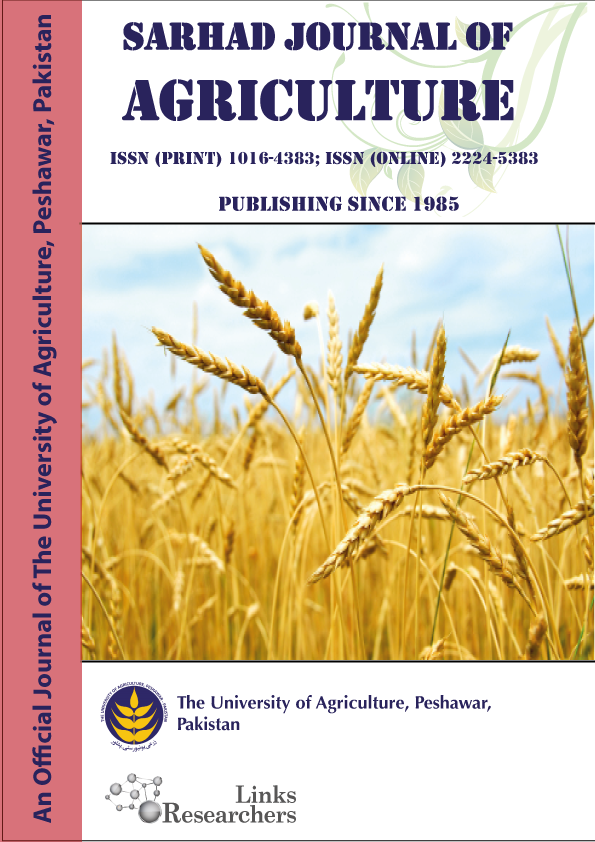Temporal Variation of Biometric Indices for Megalaspis cordyla (Linnaeus, 1758) from the Bay of Bengal, Bangladesh
Most. Shakila Sarmin1,2, Md. Ashekur Rahman1,2, Most. Farida Parvin2,3, Mst. Shefaly Khatun4, Kazi Ahsan Habib5, Wasim Sabbir6, Jun Ohtomi7 and Md. Yeamin Hossain1*
1Department of Fisheries, University of Rajshahi, Rajshahi- 6205, Bangladesh; 2Institute of Natural Resources Research and Development, Rajshahi-6206, Bangladesh; 3Institute of Environmental Science (IES), University of Rajshahi, Rajshahi- 6205, Bangladesh; 4Department of Zoology, Rajshahi College, National University, Bangladesh; 5Department of Fisheries Biology and Genetics, Sher-e-Bangla Agricultural University, Bangladesh; 6Fisheries and Marine Resource Technology Discipline, Khulna University, Khulna, Bangladesh; 7Faculty of Fisheries, Kagoshima University, 45020 Shimoarata, Kagoshima 890-0056, Japan.
*Correspondence | Md. Yeamin Hossain, Department of Fisheries, University of Rajshahi, Rajshahi- 6205, Bangladesh; Email: hossainyeamin@gmail.com
Figure 1:
Length-frequency distributions for (i) male and (ii) female of Megalaspis cordyla (Linnaeus, 1758) in the Bay of Bengal, Bangladesh.
Figure 2:
Length-weight relationships of of Megalaspis cordyla (Linnaeus, 1758) in the Bay of Bengal, Bangladesh.
Figure 3:
Monthly changes of growth coefficient (b) for Megalaspis cordyla (Linnaeus, 1758) in the Bay of Bengal, Bangladesh.
Figure 4:
Length-length relationships of Megalaspis cordyla (Linnaeus, 1758) in the Bay of Bengal, Bangladesh.
Figure 5:
Size at sexual maturity of Megalaspis cordyla (Linnaeus, 1758) in the Bay of Bengal, Bangladesh.
Figure 6:
Optimum catchable size of Megalaspis cordyla (Linnaeus, 1758) stock in the Bay of Bengal, Bangladesh.





